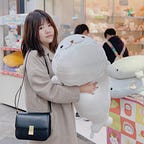03 | The Early Explorations
Hey, Welcome Back!
The Patterns
After I explained my point of view about the anxiety, I did a bunch of user research and testing, try to find some pattern in this area. Based on the results, I created this map to help me deeply understand the real user problem.
- Trigger 1 — Actions
We are easy to get into anxiety mode when we either have too many things to do or nothing to do. We can see lots of task management tools coming to our daily life, we want to have more control about that, we have fear or panic when we see the long todo list, we even try to set some deadlines or push ourself being more productive. On the other side, when we have nothing to do, we also get into the anxiety mode. We feel bored and mindfulness, we want to find some interests or we just addicted to phone. Overthinking or being over cautious become a common pattern happened at that time.
- Trigger 2 — Reflection
The Taxonomy
The response of these emotions can be various, part of them is negative, part of them can be turned to a positive way.
Design Principles
When I start doing some explorations under this domain, I set a few design principles that I’d like to follow.
DELIGHT
I read the story titled Design for Delight; it maintains three sections: deep customer empathy, go broad to narrow, and do rapid experiments with customers. In the first stage, I conducted research to help me empathize with the user’s needs and define the problem better. For the second stage, when I figured out the user and their needs, I start figuring out solutions to their challenges. During this process, I quickly started coming up against challenges. Making rapid prototypes for the domain of anxiety, I explored four areas of study and then narrowed down to the present in a delightful way. For the third stage, I did rapid experiments with users. In this case, the purpose of experimentation is to learn user behavior and see how it works in real life.
IMPACT
According to the dictionary, the impact can be defined as “having an effect or influence on someone or something.” But who do we influence? We could continue by asking why, how, for how long and in which way do we affect them? Many designers, including me, seek work that is meaningful and impactful. We strive for purpose in our design work and want to see change happen in the world. For the thesis project, my main purpose is to reduce anxiety by changing people’s relationship with their daily objects. I am not expecting to remove the problem, just to create tools and products that can be engaged in their anxious zone.
AESTHETICS
We enjoy looking at and using aesthetically pleasing design because it satisfies our senses and gives us pleasure. In my thesis project, in addition to considering functionality, I will also engage in the exploration of form, texture, and visual language. The most dominant sense for the majority of people insight. We cannot stop ourselves from looking at what we find beautiful. It is as if the light that reflects from the beautiful design acts as a magnet for our eyes. I try to use different textures to shape the form, to let people feel more engaged when they interact with the product.
💛 | Last But Not Least
👏 Hit Clap if you enjoyed this article, this will tell me to write more of it!
💬 Comment if you have something to say
😍 Click follow Ricky to get updates of my recent articles
Feel free to check my portfolio here or drop me a line!
Links to some other cool reads:
- My first impression about Shape, a new design tool from IDEO
- 36 Days Commitment — Experience and lessons learned from the daily challenge
- Blood Donation Experience Redesign Case Study
👋🏻 Thanks for stopping by, see you next week!
